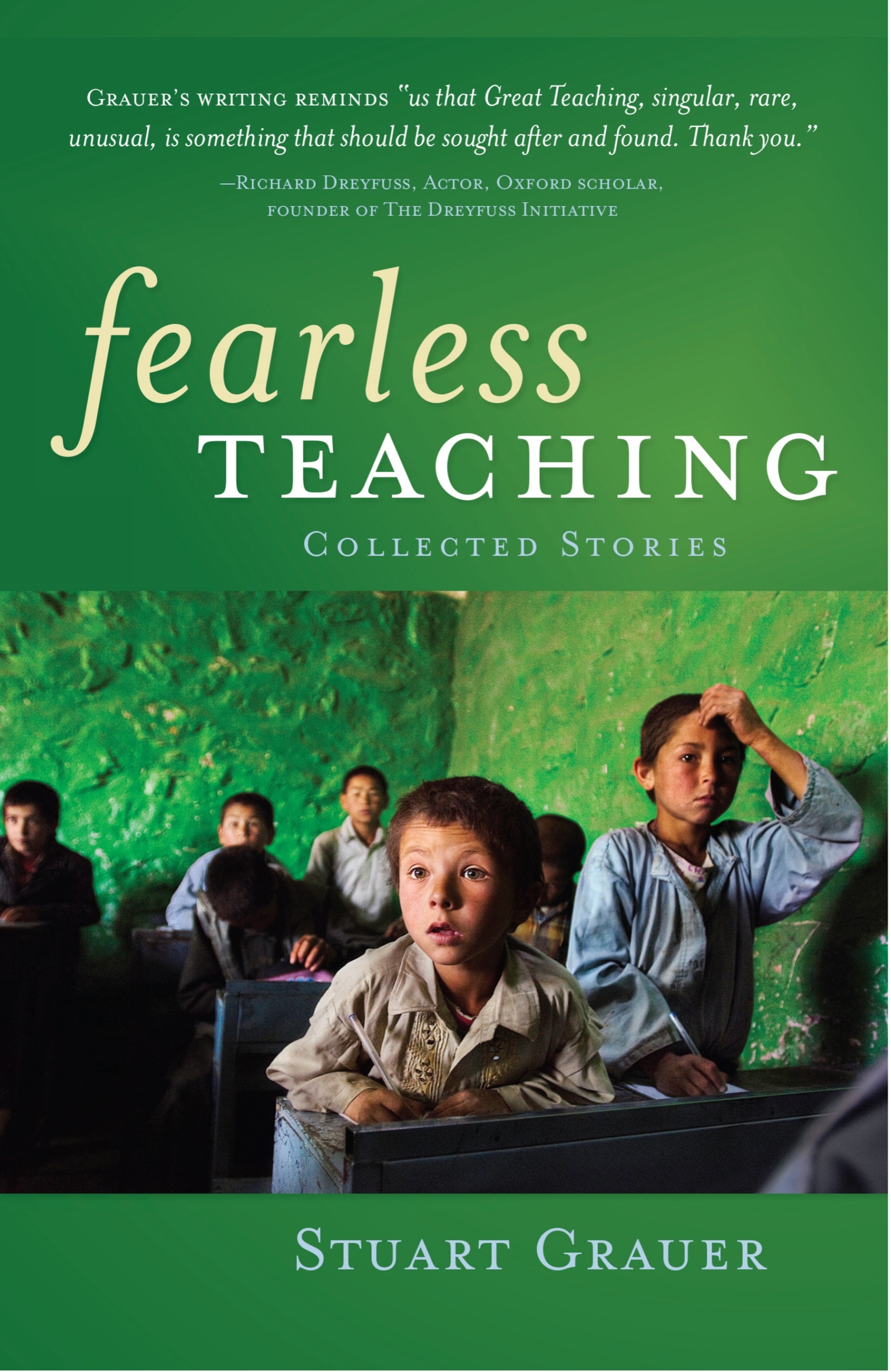60 Years of Research on Small Schools
60 Years of Research on Small Schools
Stuart Grauer
Smaller learning communities are routinely perceived and treated as “less” by virtue of their size when, in fact, they often offer more in essential areas.
Two Ignored Facts:
Schools and school districts have grown steadily in size for well over 100 years.
Since the 60s, teachers have been consistently expressing their desire for smaller learning communities.
The reasons for this disconnect, at least in the United States—political and not economic—are outside the scope of this article, but the reasons people thrive better in smaller learning communities are powerful and in need of clear expression. Smaller learning communities offer greater benefits in every key area of national concern as well as of concern to every parent and school leader: safety, teaching conditions, academic performance, culture of equal opportunity on campus, learning choices and curriculum, and costs of schooling.
Before stating what is so advantageous about small schools, it is crucial to state what a small school is, and is not, because the millions lose out when small schools aren’t really small. A small school is not small if it consists of 400 or more students. According to Gregory’s research (2000) it is optimal at close to half that size, and extensive literature review has shown me that at around 300 and more-so at 235 students, many small school advantages diminish.
The Gates Foundation put small schools on the map a few years ago, and then wiped them off of it. The Gates experiment was declared a failure while neglecting a mission critical fact. The Gates small schools were declared a resounding success when they started out, with 400 and less students. As the Gates schools allowed their student bodies to creep up to 500 in size, they were still labelled “small schools.” However, they naturally lost their impact. Because of the enormous influence of Gates and the straw man his mis-labeled “small” schools created, the small schools movement was dealt a devastating blow. Therefore, researchers, policy makers and the public must recognise that to deem a school of around 300 or fewer students (and absolutely less than 400) “small” comes with real risk in terms of the key benefits.
Panamanian girls get ready for school. (Photo: S. Grauer)
For instance, in true small schools, students are absent much less, drop out at nearly half the rate, have higher grade point averages, and improve reading scores by almost a half-year grade equivalency more than large schools (Wasley et al., 2000).
While small schools have a higher cost per pupil than large schools, they have a lower cost per graduate since they tend to have lower dropout rates. The higher percentage of dropouts from large schools are associated with serious, additional societal costs such as crime and lifetime earnings (US Department of Education).
Students in small schools outperform students in large schools on standardised achievement tests, significantly (Raywid, 1997/8, p. 34; Bryuk & Driscoll, 1998). In Matthews’s 2014 study of the nation’s most academically “challenging” schools, 40% of them were schools of less than 350 students, an extremely disproportional distribution in favor of small schools.
Also according to the research, small schools are safer, reporting fewer fights and no incidents of serious violence (National Center for Education Statistics, 1998). A 1999 U.S. Department of Education study found that schools with more than 1000 students had far higher rates of violent student behaviour than schools with fewer than 300 students, and teachers and students in small schools were far less likely to be victims of crime (McRobbie, J., (2001, October). But students are not only physically safer in schools of less than 400, they feel emotionally safer and more connected with adults—which positively impacts learning.
The size of the student body alone does not make a good school, of course. But there are things that can occur in small groups that can’t in big ones. Research shows that in small schools, relationships between students and adults are strong and ongoing. There is much more advising going on, either formally or informally. This leads to clearer paths to graduation and postgraduate plans. Secondly, relationships with parents are strong and ongoing. Thirdly, small schools have a leaner administrative structure, so that the whole faculty shares in decision-making. This fact explains why teachers in small schools feel a greater sense of efficacy—they have a say, and they report higher job satisfaction.
The research is rich: In a review of more than 100 studies and evaluations, Cotton, noted, “Research has repeatedly found small schools to be superior to large schools on most measures and equal to them on the rest. This holds true for both elementary and secondary students of all ability levels and in all kinds of settings.” Again out of the scope of this primer, research into anthropology, organisational development, sociology and history all have much to tell us about group size that has rarely if ever been factored into school design.
One of my favourite aspects of the small school is that the school develops its own, unique culture. The culture of small schools typically revolves around hard work, high aspirations, respect for others, and the expectation that all students will succeed.
Why is there a bias towards large schools? Wasley and Lear explain it like this: Our collective memory of high school in the U.S. includes nostalgia such as proms, football games, exciting social lives, romance, and first cars. No matter that such memories do not apply to most students. The average high school student does not attend sporting events; indeed the larger the school, the smaller the percentage of student participation in these activities. For many students, the social scene in large high schools is tough and unforgiving, with sharp distinctions made between the small group of social haves and the far larger masses of have-nots. And high school memories seldom include a significant academic component, let alone an intellectual one (2001).
Rather than logging millions of miles per year on busses to comprehensive schools and being dropped into fenced compounds with thousands of students, what if schools were created to be safe and manageable in size? Students deserve to be free from worry about personal safety and to be confident that their teachers and administrators know them well and can guide their development of skills and knowledge.
REFERENCES
Cotton. 1996. http://www.ed.gov/offices/OESE/
Cushman. 1997. http://www.ed.gov/offices/OESE
ED.Gov. School Size. http://www2.ed.gov/about/offices/list/ovae/pi/hs/schoolsize.html
Gladwell, Malcolm. The Tipping Point: How Little Things Can Make a Big Difference. Boston: Little, Brown, 2000. Print.
McRobbie, J., (2001, October). Are small schools better?: School size considerations for safety and learning. San Francisco, CA: WestEd Policy Brief.
Raywid, M. & Oshiyama, L. (2000, February). Musing in the wake of Columbine: What can schools do? Phi Delta Kappan, 81(6), 444–449. https://journals.sagepub.com/home/pdk
Wasley, and Lear. “Educational Leadership.” Mar. 2001. Web. http://www.sfgate.com/cgi-bin/article.cgi?file=/chronicle/archive/2001/04/01/MN120526.DTL
ABOUT THE AUTHOR
Stuart Grauer helps and consults with schools that are small by design and looking for assistance with their marketing, governance, parent relations, and faculty training as they provide key, strategic information all these constituencies. Grauer’s writings and work have taken him many times around the globe and have been covered widely — including by The Discovery Channel, Phi Delta Kappan, The New York Times, and Independent Schools Magazine. He has taught public and private, grades three through postgraduate, and is founder of The Grauer School and the Small Schools Coalition (SSC). His recent book is “Fearless Teaching” (AERO), available wherever books are sold.
His recent book is “Fearless Teaching” (AERO), available wherever books are sold.








Leave a Reply
Want to join the discussion?Feel free to contribute!